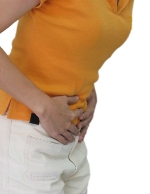IBS Treatment – Dietary Therapy

About 50% of people with IBS report that their symptoms arise after eating a meal, giving rise to the theory that food hypersensitivity, or intolerance may be the cause. Foods in the diet can be the source of all of the symptoms of IBS, including pain, bloating, abdominal discomfort, and alterations in bowel habit.
Some of the primary foods that are most likely to cause IBS symptoms are dairy products, eggs, and wheat. Other potential food triggers include high fatty foods, caffeinated drinks, and raw fruits and vegetables. Foods like beans, onions, bagels, bananas, and carrots have been associated with increased gas. These foods can initiate a low-grade immunity reaction. In the general population, the threshold is much higher, but for some patients with IBS, a cascade effect takes place. It results in more and more immunity cells being activated.Â
Randomized controlled trials in England have focused on identifying and eliminating food triggers. The results of these trials were positive. The study showed that 54% of the patients who followed the diet improved their symptoms compared to 15% who were on a fake diet. The study also showed that when the regular diet was resumed, the patients again began to experience the symptoms of IBS.
For more than 20 years, dietary restrictions have been the first line of treatment for IBS. Since dietary restrictions of a large group of suspected foods are not practical, physicians use elimination-challenge diets to pinpoint the food triggers. Prior to initiating dietary restrictions, the person will be asked to write a journal of the symptoms experienced and for which foods. This journal should occur over a 1 to 2 week span and include descriptions of symptoms and the times they occur. The symptoms can be varied, covering GI complaints, skin changes, mood changes, fatigue, and concentration difficulties. Foods identified as triggers are reviewed and then eliminated from the diet, using either a low-intensity or high-intensity elimination, or a high-intensity or “few foods” diet. A low -intensity elimination, or a “food-specific” diet removes one food or food group from the diet. A high-intensity elimination diet removes more than one food or food group from the diet.
It is preferred most by physicians, because many times, a person may be intolerant to a combination of foods, and not just one food in the diet. A few-food diet is restricted to the intake of only certain foods that do not trigger symptoms. This diet has to be highly monitored to ensure compliance. If symptoms decrease during the avoidance phase, it is highly likely that the foods that were eliminated were causing the symptoms. To ensure this is the case, the food is gradually reintroduced to determine if symptoms recur. If more than one food is eliminated, the foods are reintroduced one at a time every 3 to 4 days, to provide enough time for symptoms to appear. If there is a recurrence of symptoms after a certain food is reintroduced, the triggering food is identified and a long term dietary plan is made.
Dietary therapy with the elimination of triggering foods has been successful in relieving the GI symptoms for both adults and children, especially those with diarrhea-predominant IBS. It has been proven to be effective when used alone or with traditional medications.
References:
Hanaway PJ, ed. Irritable Bowel Syndrome. Second ed. Philadelphia: Saunders Elsevier; 2007. Rakel D, ed. Integrative Medicine.
Rindfleisch JA, ed. Adverse Food Reactions and the Elimination Diet. Second ed. Philadelphia: Saunders Elsevier; 2007. Rakel D, ed. Integrative Medicine.
